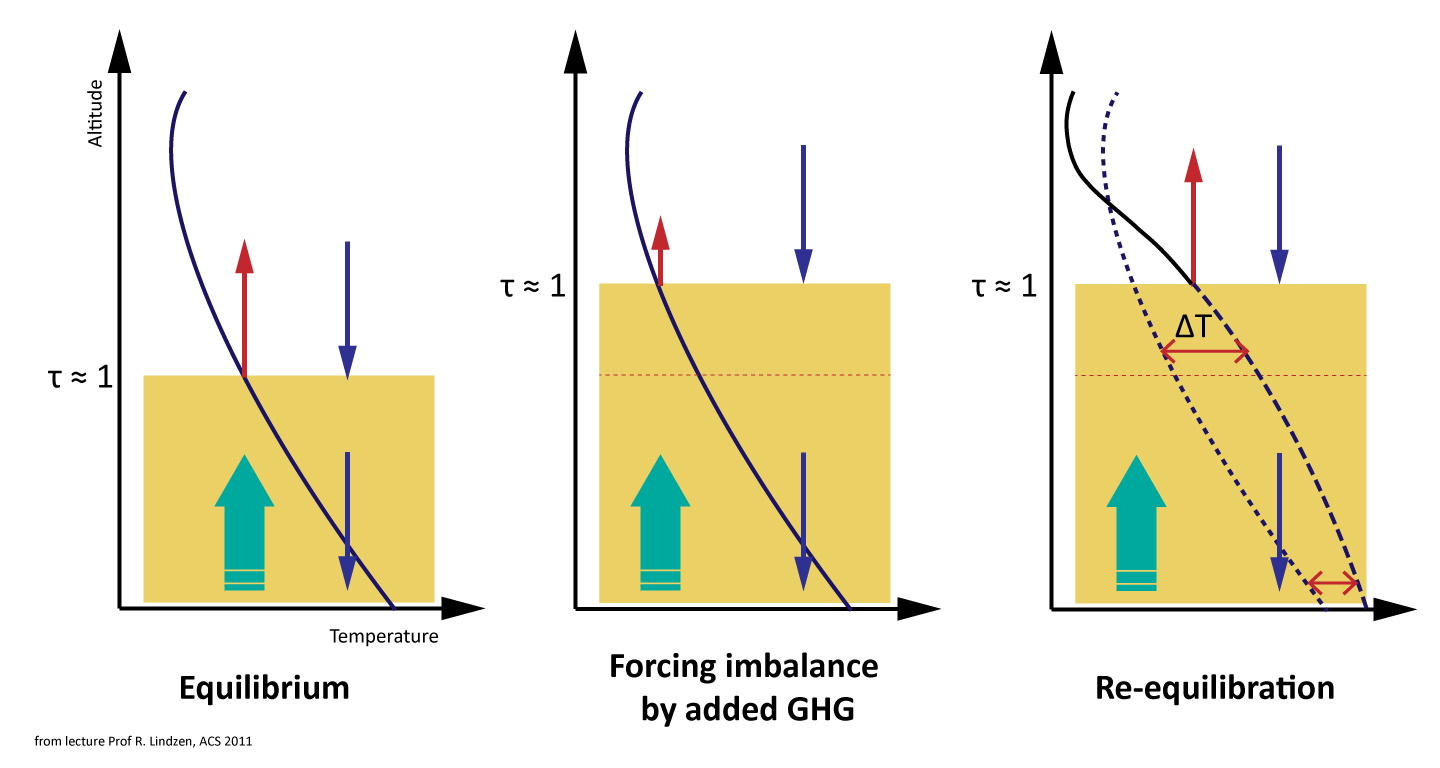Forcing F is defined as the amount of energy emitted by the earth surface in the IR range that will not escape to the outer space in a direct, unabsorbed way, but will be absorbed by GHGs; eventually, this energy must be “forced away” by radiation at a higher temperature.
Myhre et al. have evaluated the radiative forcing due to well mixed greenhouse gases by performing band by band calculations. They could establish the relationship for CO2 as:
 (eq. 6)
(eq. 6)
Where:
- F is the energy forcing [W m-2]
- C0 and C1 the initial and final CO2 concentration
This parameter 5.35 is now generally used by climate scientists and the IPCC.
Note the decreasing logarithmic relation: the forcing caused by a 1 ppm change at 800 ppm will be only 50% of the one caused by the same 1 ppm at a 400 ppm level.
Lapse rate shift
When added GHGs absorb more long-wave outgoing radiations the lapse rate in the troposphere will need to be shifted to higher temperatures to satisfy the necessary balance between incoming and outgoing energy.

Surface temperature increase as result of forcing and lapse rate. Forcing: transforming W m-2 to °C.
Equilibrium: the upwelling heat flux, in the lower part of the troposphere in the form of convective and radiative transfer, will ultimately escape the earth in the form of IR radiation.
Imbalance: when additional energy will be absorbed by GHGs, the corresponding “characteristic emission level” τ will be elevated to a cooler altitude.
Re-equilibration: the lapse rate (moist adiabatic) will shift towards higher temperatures.


